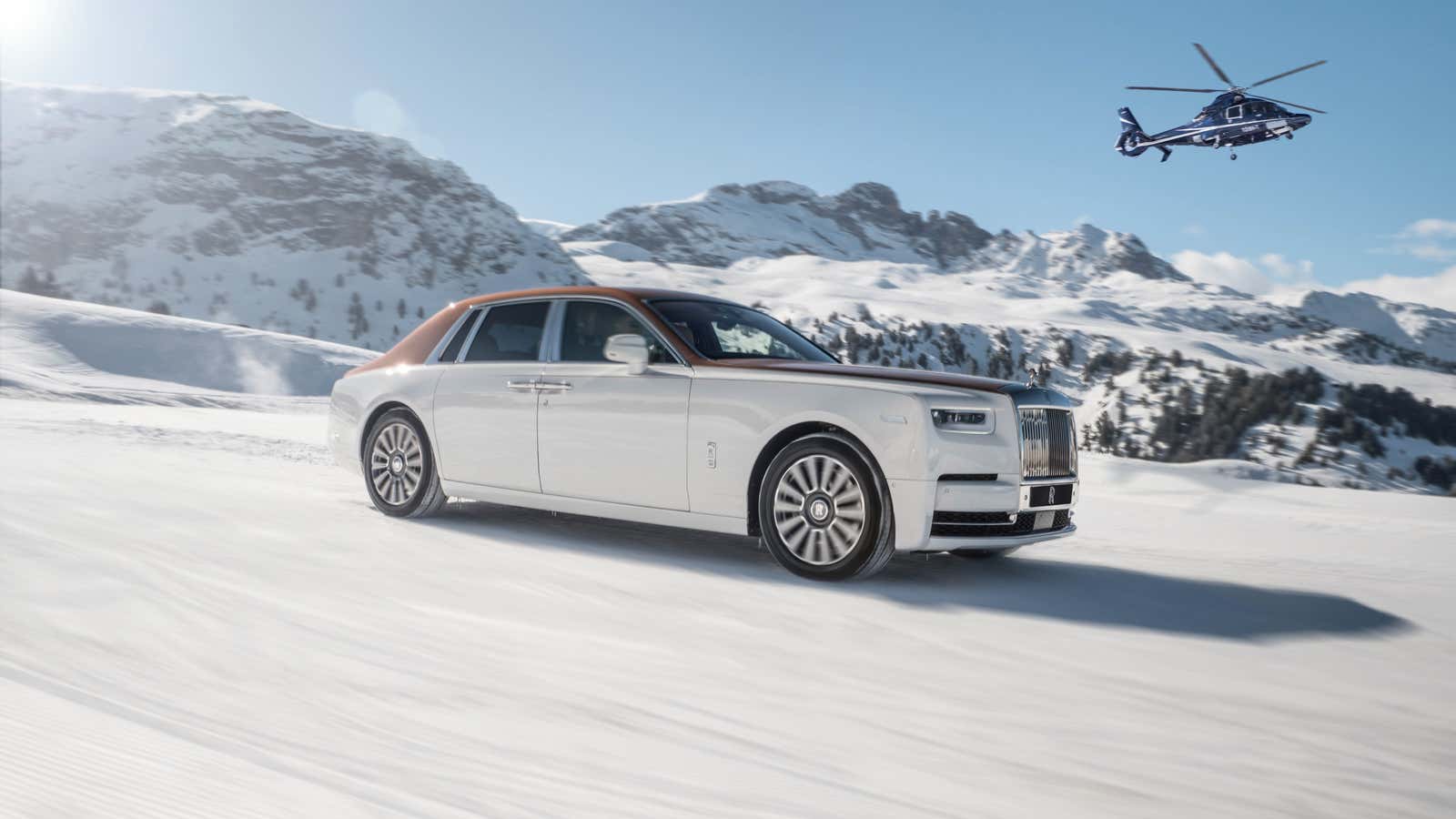Luxury British car-maker Rolls-Royce had a stellar 2018. It sold 4,107 cars, up 22% from the year before. It was the company’s best annual result in its 115-year history.
The sales were revved up by the US, its largest market, which account for around a third of worldwide purchases.
“The tax reform helped a lot to fuel our business,” CEO Torsten Müller-Ötvös told the Financial Times (paywall). The reform in question is the tax cut pushed through by Donald Trump in 2017, perhaps the president’s signature legislative achievement.
The benefits of the tax cuts flowed mainly to corporations and the wealthy. That gave the sort of people who buy Rolls-Royces—which start around $250,000, but can easily reach seven figures with bespoke options—more money to spend on things like the new Phantom.
When Trump first pushed for the tax cuts, they were largely framed as a way to boost the US economy. And although the bill certainly gave economic growth a boost in the short term, it is also expected to add $2.7 trillion to US borrowing over the next decade.
The tax changes certainly gave the Rolls-Royce economy a boost, which is good news for German parent company BMW. It is also somewhat surprising, perhaps, given that an extra dollar in a wealthy person’s pocket is more likely to be saved than spent. By contrast, more money for someone living paycheck-to-paycheck is likely to go straight back into the economy. (Trump floated the idea for a middle-income tax cut ahead of last year’s midterm elections, but nothing came of it.)
“It is never that our buyers are short of the money,” Rolls-Royce’s Müller-Ötvös told The Telegraph, “but the question is ‘am I in the mood to buy a new Rolls-Royce?’”
Last year, at least, the answer was yes.
